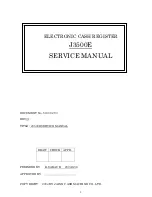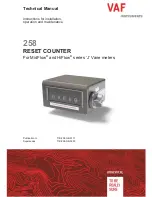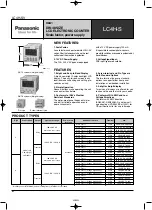
Chapter 2 Operating Your Frequency Counter
Using the Utility Menu
2-60
Operating Guide
2
To Configure the RS-232 Serial Port for Sending Limit-Detect
Output
NOTE
If you cycle power, you will lose everything except saved measurement setups and
special parameters stored in non-volatile memory; therefore, make sure you use the
Save function of the Counter to retain the measurement setup prior to powering down
to set up the Limit-Detect Output line (pin 4) of RS-232 serial connector. Refer to the
appropriate section in this chapter for details on how to use Save and Recall.
1
To use the Limit-detect output from the serial port, perform the following steps:
a.
Save your measurement setup that includes your Limit Testing choices, by
simply pressing the Save & Print key and the appropriate arrow keys until
SAVE: 1
is displayed, then Enter key to save to register 1.
b.
Turn off the Counter.
c.
Press and hold Recall (Utility) key, then press POWER key.
d.
Press Recall (Utility) key until
DTR:
is displayed.
e.
Press any one of the arrow keys until
DTR: LIMIT
is displayed.
2
Press Run key.
3
Press Recall (Utility) key until
RECALL 1
is displayed, then wait a few seconds
to recall the measurement setup saved in register 1.
Since your measurement setup included your settings for upper and lower limits, and
LIM TEST:
was set to
ON
, the Counter is now set for limit testing with the Limit-
detect output.
If a measurement drifts out of the user-entered limits, the Limit annunciator in the
display will light. Also, pin 4 on the RS-232 connector will change state (to a low-
voltage RS-232 level) to flag each time a measurement drifts out of the limits. (RS-
232 voltage levels swing from ±12V.)
Summary of Contents for 53181A
Page 2: ...NOTES...
Page 14: ...Contents x Operating Guide...
Page 24: ...Preface xx Operating Guide...
Page 33: ...1 Getting Started...
Page 68: ...Chapter 1 Getting Started Making Measurements 1 36 Operating Guide 1...
Page 69: ...2 Operating Your Frequency Counter Operator s Reference...
Page 143: ...3 Specifications...
Page 160: ...Chapter 3 Specifications Introduction 3 18 Operating Guide...
















































